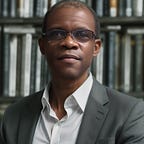The Empathetic Leader’s Guide to Human-Centric Organizations
Introduction
The concept of organizational development is a key factor in achieving success in the rapidly changing landscape of modern business. This discipline has traditionally been viewed through the lens of systems, processes, and strategies. However, as we delve deeper into understanding the dynamics of effective workplaces, it is increasingly evident that the human element — with its complex web of emotions, perceptions, and interactions — is a pivotal factor in shaping organizational outcomes. Consequently, the study of organizational development has become an essential aspect of contemporary business and management practices.
At the core of this emphasis on a human-centric approach lie four essential components: roles, conversations, decisions, and actions. Each of these components plays a critical role in driving efficiency, innovation, and adaptability, thereby fostering organizational resilience and sustainable performance. However, their functional importance is not the only facet of their significance. These elements are deeply intertwined with the personal experiences and emotional landscapes of the individuals who inhabit them. The interplay between these elements and the human element is integral to the success of any organization.
